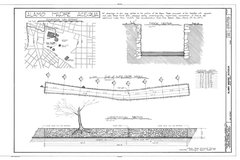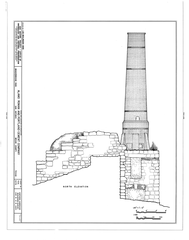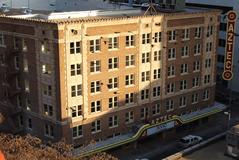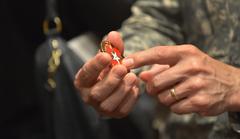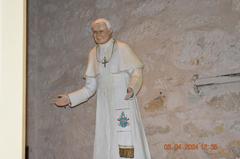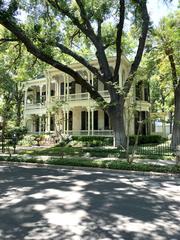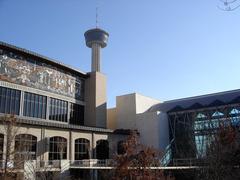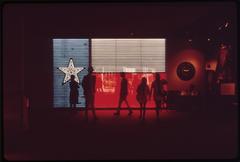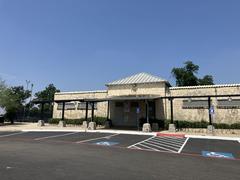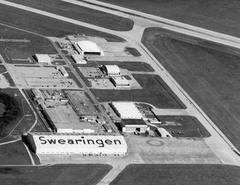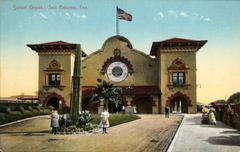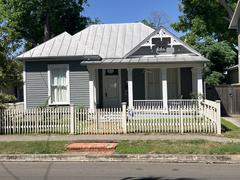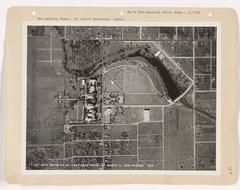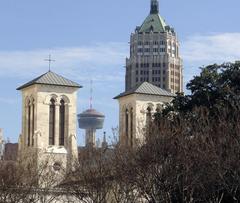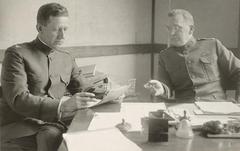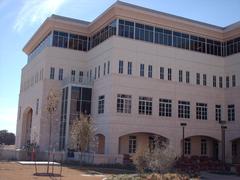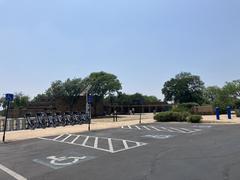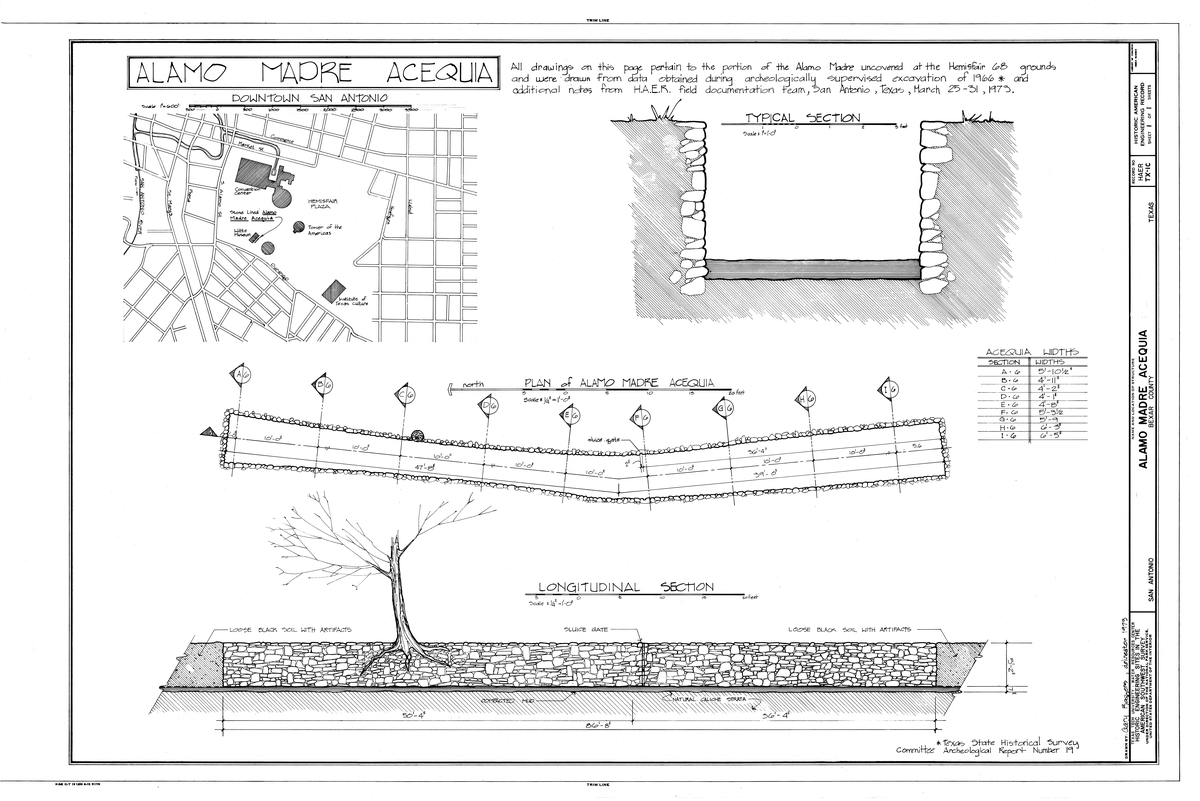
Acequia Madre de Valero Visiting Hours, Tickets, and San Antonio Historical Sites Guide
Date: 15/06/2025
Introduction
The Acequia Madre de Valero, an 18th-century irrigation canal, is a cornerstone of San Antonio’s rich history. Built beginning in 1719 by Spanish settlers and indigenous peoples, this innovative waterway supported agriculture, mission life, and the city’s early growth. Drawing on Moorish engineering adapted to the arid Texas environment, the acequia not only reveals the city’s colonial past but also embodies the multicultural heritage that shaped San Antonio. Today, preserved segments at the Witte Museum, Hemisfair Plaza, Yanaguana Garden, and Brackenridge Park invite visitors to experience this engineering marvel firsthand.
This guide provides an in-depth look at the acequia’s origins, technological features, societal role, and ongoing preservation, alongside practical information on visiting hours, ticketing, accessibility, and nearby attractions. Whether you’re a history enthusiast or a curious traveler, this resource will help you discover one of San Antonio’s most treasured historical sites (Texas Public Archaeology Network, UIW Seven Acequias, 78209 Magazine, San Antonio Report).
Table of Contents
- Introduction
- Origins and Construction
- Expansion and Integration
- Role in Mission and Community Life
- Engineering Significance
- Decline and Preservation
- Cultural and Historical Legacy
- Visiting Information: Hours, Tickets, and Tips
- Visitor Experience: Access, Interpretation, and Activities
- Practical Information
- Preservation Challenges and Initiatives
- Responsible Tourism Practices
- Frequently Asked Questions (FAQ)
- Summary and Final Tips
- References
Origins and Construction of the Acequia Madre de Valero
Constructed soon after Mission San Antonio de Valero’s founding, the Acequia Madre de Valero was a collaborative endeavor between Spanish settlers and indigenous peoples of the Province of Tejas. Utilizing Moorish-inspired gravity-flow irrigation, the acequia channeled water from the San Antonio River to mission fields and settlements. A key element was the Diversion Dam—originally located at the river’s first bend, now near the Witte Museum—which redirected water into the acequia’s 3.5-mile course (Texas Public Archaeology Network).
Expansion and Integration into San Antonio’s Water System
By the early 1800s, the Acequia Madre had become part of an extensive, 50-mile network of acequias serving missions, the town (villa), and presidio lands. These canals provided critical water for agriculture and domestic use. Water rights were managed by the acequiero, a community-elected manager; the first was Angel Calin, a Canary Islander, underscoring San Antonio’s diverse heritage. Additional ditches such as the Alamo Madre and San Juan Acequia connected to the main system (UIW Seven Acequias).
Role in Mission and Community Life
The acequia was fundamental to the survival and prosperity of Mission San Antonio de Valero, ensuring reliable irrigation for crops and water for daily needs. Communal water allocation fostered cooperation among the diverse mission community, including indigenous, Spanish, and Canary Islander residents (Texas Public Archaeology Network, UIW Seven Acequias).
Engineering Significance
Recognized as a National Historic Civil Engineering Landmark, the acequia’s gravity-fed, stone-lined channels and dams exemplify early water management and construction ingenuity. Recent archaeological discoveries at the Witte Museum revealed original acequia segments, confirming its impressive scale and sophistication (Texas Public Archaeology Network).
Decline and Preservation
The acequia remained in use for nearly 200 years, declining after the introduction of modern water systems in 1905. Today, remnants are preserved at various sites, including a fish pond behind the Alamo, storm drain outlets near Brackenridge Park, and a 95-foot section at Hemisfair Plaza. The Espada Dam and acequia south of San Antonio remains the only operational Spanish colonial acequia in the U.S. (UIW Seven Acequias).
Cultural and Historical Legacy
The Acequia Madre de Valero transformed San Antonio’s landscape, laying the foundation for the city’s agricultural and urban development. Its multicultural origins and communal management remain a testament to cooperation and resilience. Today, the acequia is part of San Antonio’s UNESCO World Heritage designation and is protected as a Recorded Texas Historic Landmark (Tourist Secrets).
Visiting Information: Hours, Tickets, and Tips
- Witte Museum (primary access): Open daily, 10 a.m.–5 p.m.; admission ~$18 adults, discounts for seniors/children; includes acequia exhibits and gardens.
- The Alamo: Open daily, 9 a.m.–5:30 p.m.; free admission (timed tickets recommended).
- Hemisfair Plaza and Public Parks: Segments of the acequia are visible year-round during daylight hours; no fee required.
Tips: Wear comfortable shoes, bring water, and check museum or city websites for special event schedules and guided tours.
Visitor Experience: Access, Interpretation, and Activities
- Access: The acequia is best accessed via the Witte Museum campus along Broadway, with clear signage and maps (78209 Magazine, City of San Antonio Acequia Maps).
- Interpretation: The Zachry Family Acequia Gardens at the Witte Museum feature a reconstructed diversion dam, interpretive signage, and educational programming.
- Activities: Guided tours, school group activities, heritage events, and photographic opportunities abound throughout the gardens and preserved acequia segments.
Practical Information
- Accessibility: Pathways at Witte Museum and acequia gardens are ADA-compliant; some segments in parks have uneven terrain.
- Guided Tours: Offered regularly at the Witte Museum and during special events; advance booking recommended.
- Amenities: The Mays Family Center offers exhibit space, restrooms, a café, and gift shop; parking and public transit readily available.
Preservation Challenges and Initiatives
Preservation efforts focus on stabilizing the acequia’s rock and clay structures, controlling erosion, and integrating the canal into urban development. The City of San Antonio, historians, and local organizations collaborate on preservation, educational outreach, and community engagement (City of San Antonio Acequia Maps).
Responsible Tourism Practices
- Respect Archaeological Sites: Stay on paths, follow signage, and avoid disturbing exposed structures.
- Cultural Sensitivity: Appreciate the site’s indigenous and colonial heritage; respect ongoing religious and community uses.
- Environmental Stewardship: Use refillable water bottles, pack out trash, and avoid disrupting local flora and fauna.
- Support Preservation: Donate to local history programs and participate in educational initiatives.
Frequently Asked Questions (FAQ)
Q: What are the Acequia Madre de Valero visiting hours?
A: Hours vary by location. Witte Museum: 10 a.m.–5 p.m. daily; Hemisfair acequia segments: daylight hours.
Q: Are there tickets required?
A: Witte Museum requires admission; acequia gardens and public park segments are generally free.
Q: Is the site accessible for people with disabilities?
A: Yes, most major sites and gardens are ADA-accessible.
Q: Are guided tours available?
A: Yes, through the Witte Museum and local organizations; booking ahead is advised.
Q: What are popular nearby attractions?
A: The Alamo, Brackenridge Park, San Antonio Botanical Garden, San Fernando Cathedral, and the San Antonio Missions National Historical Park.
Summary and Final Tips
The Acequia Madre de Valero stands as a living tribute to San Antonio’s colonial origins, engineering excellence, and vibrant multicultural heritage. Today’s visitors can explore the acequia’s story at accessible locations like the Witte Museum’s gardens and Hemisfair Plaza, experience dynamic educational programming, and enjoy nearby historic sites. Practicing responsible tourism ensures the preservation of this treasure for generations to come.
Plan your visit using up-to-date resources, join guided tours, and enrich your experience by exploring related sites such as the Alamo and San Antonio Missions. Stay informed by following official heritage channels and consider downloading the Audiala app for audio tours and updates. Witness the enduring legacy of history flowing beneath San Antonio’s streets and parks (UIW Seven Acequias, Witte Museum, 78209 Magazine).
References
- Texas Public Archaeology Network
- UIW Seven Acequias
- 78209 Magazine
- San Antonio Report
- City of San Antonio Acequia Maps
- Witte Museum
- Tourist Secrets
